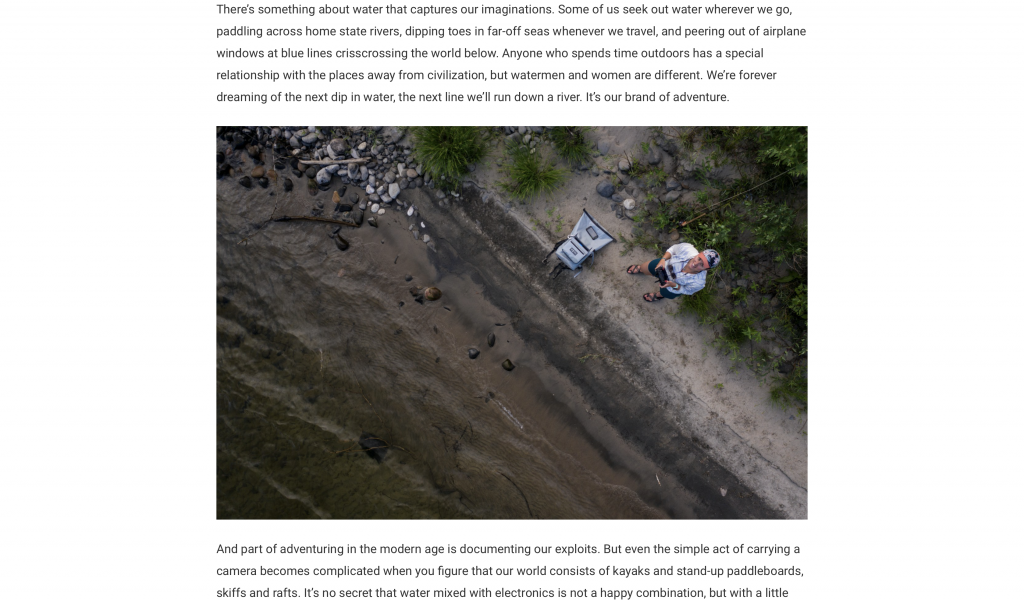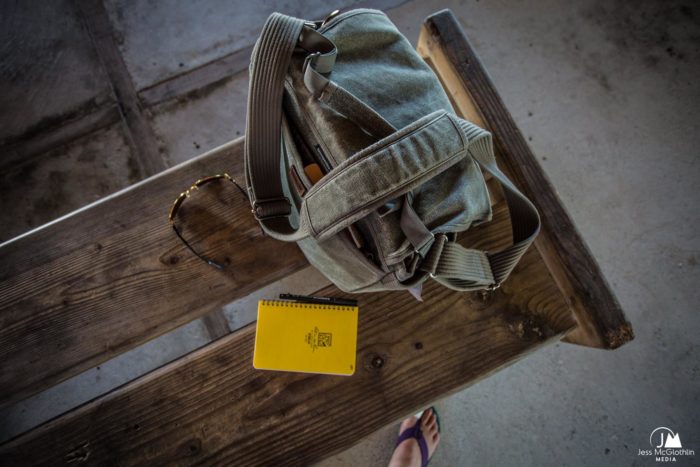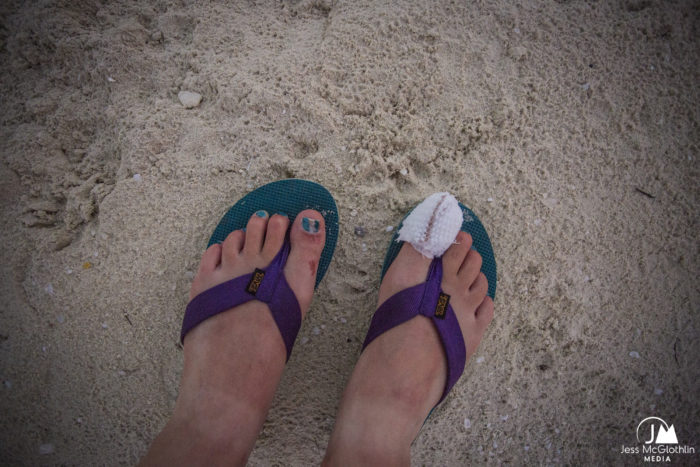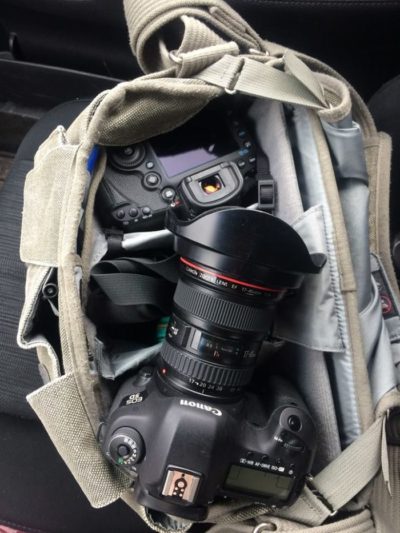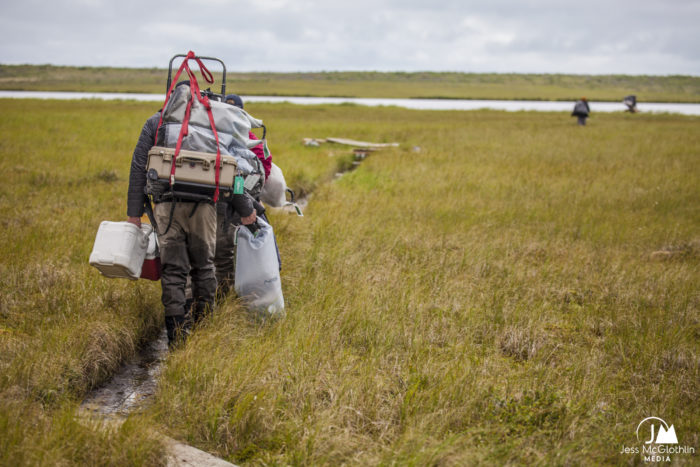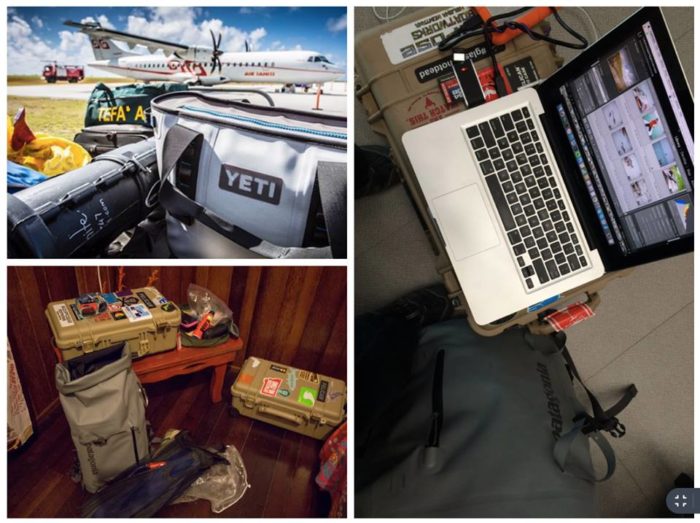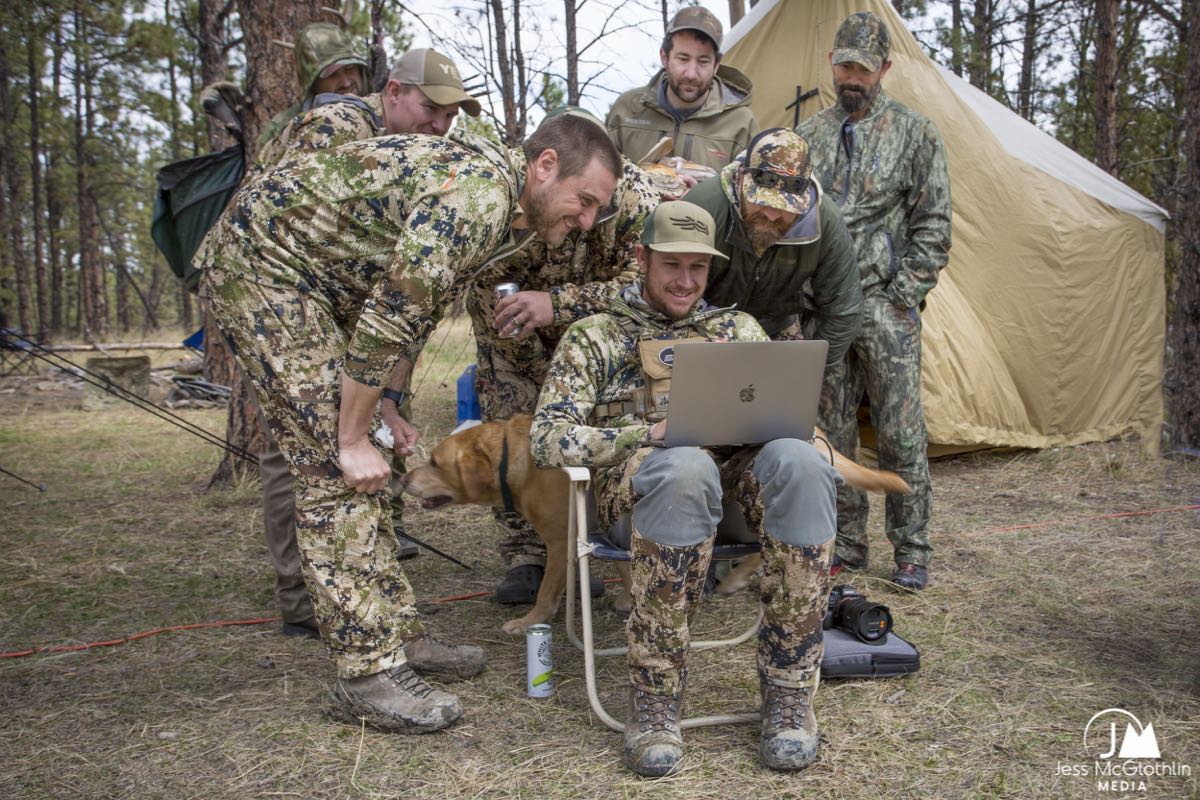Outdoor photography, by its very definition, takes place, well… outdoors.
And the outdoors are dusty. And muddy. Sandy. Gritty. Windy. Wet. Damp. Humid. Icy. Smoldering.
None of which present “ideal” operating conditions for camera equipment.
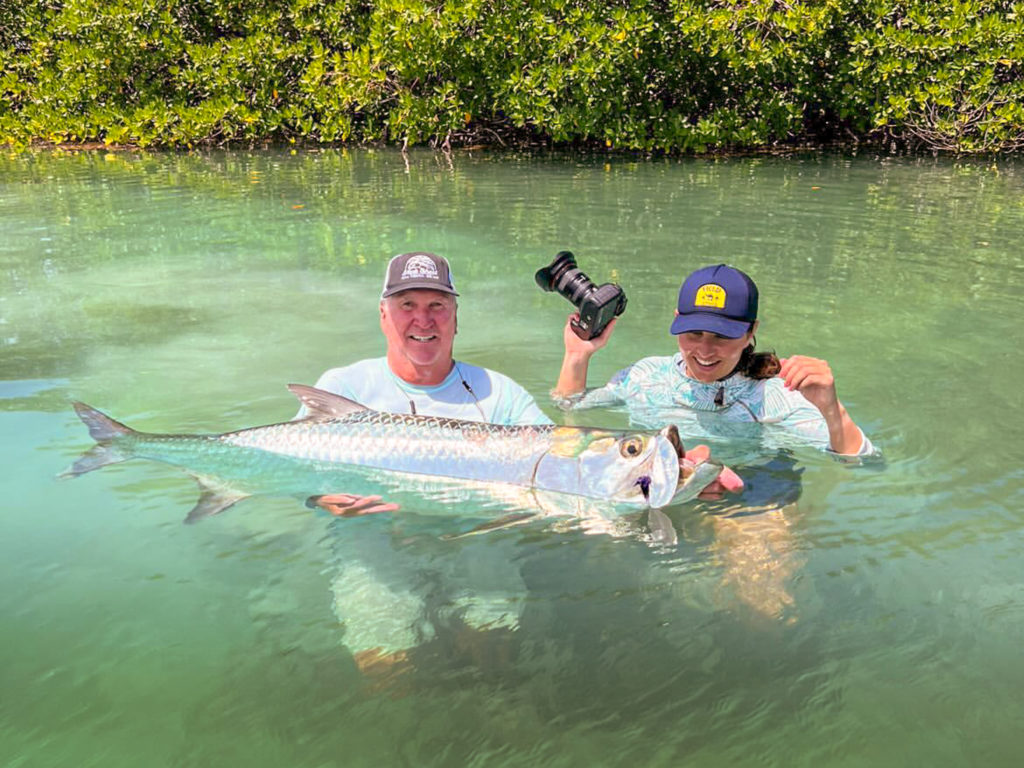
One of the most common questions I get is how I manage gear in the field, keeping it functional and operating at peak capacity when conditions are tough. The care and keeping of camera gear varies with every shoot as the conditions are different, but here’s a look at my basic daily cleaning routine in the field, as well as upkeep maintenance I do upon returning from a shoot.
Camera Bodies / Lenses
Especially on saltwater or very dusty shoots, cameras and lenses are wiped down with a damp washcloth each evening. Lenses and filters are cleaned and swabbed dry, and if needed a bulb blower is used to remove dirt and dust from crevices. Camera bags are dried if they got wet throughout the day.
Every night I upload image files from my memories cards into Lightroom, and back up in triplicate before clearing / reformatting the memory card. Batteries are charged up if needed. And it’s all left to air-dry a bit before being packed and prepared for the next morning.
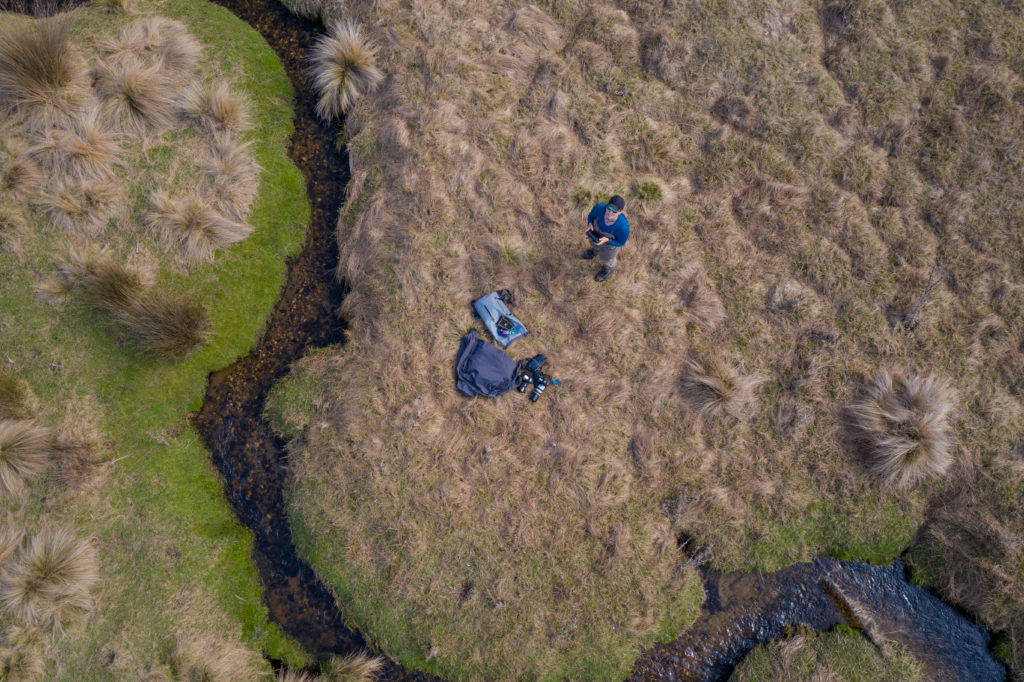
Drone
The drone presents a love / hate relationship. Logging flight plans and following international import laws means there is no time to slack. Before leaving for any shoot, I always perform a check flight at home, then do another upon arriving at the shoot location to ensure nothing was damaged in travel. My drone spends a fair bit of time crossing the equator, which seems to mess with the compass settings. That’s a frequent reset / reconfigure routine.
Remember, know your equipment. Know its temperament and common issues… it helps troubleshoot things like this in the field.
On a recent international shoot, my drone was roughed up a bit by customs and I was getting odd error messages in the field, after a clean test-flight at the lodge. I’ve spent the past week stripping all the software off, reinstalling, and reformatting the whole thing. That’s also involved a lot of test flights, diagnostics, and all those things that take a lot of time but are a part of the package.
In the field, the drone gets a minor version of the DSLR’s nightly routine. Wipe down, inspect for dual damage, clean lens and filters, ensure batteries and controller are charged for the next day. Especially in saltwater climates, sunscreen, high humidity, and saltwater don’t make for a terribly LiPo (lithium polymer) battery-friendly environment.
Speaking of those LiPo batteries. The batteries are notoriously volatile, and don’t do well in very hot environments. (Like a 100+F flats boat.) Keep them in the shade when possible… keep them cool. Rotate through your stock; don’t always use the same battery and keep the others as backup. I have mine labeled numerically, and note in my flight log which battery was used, and to what percentage it was drained to. It’s a good way to ensure rotation and also track potential problems.
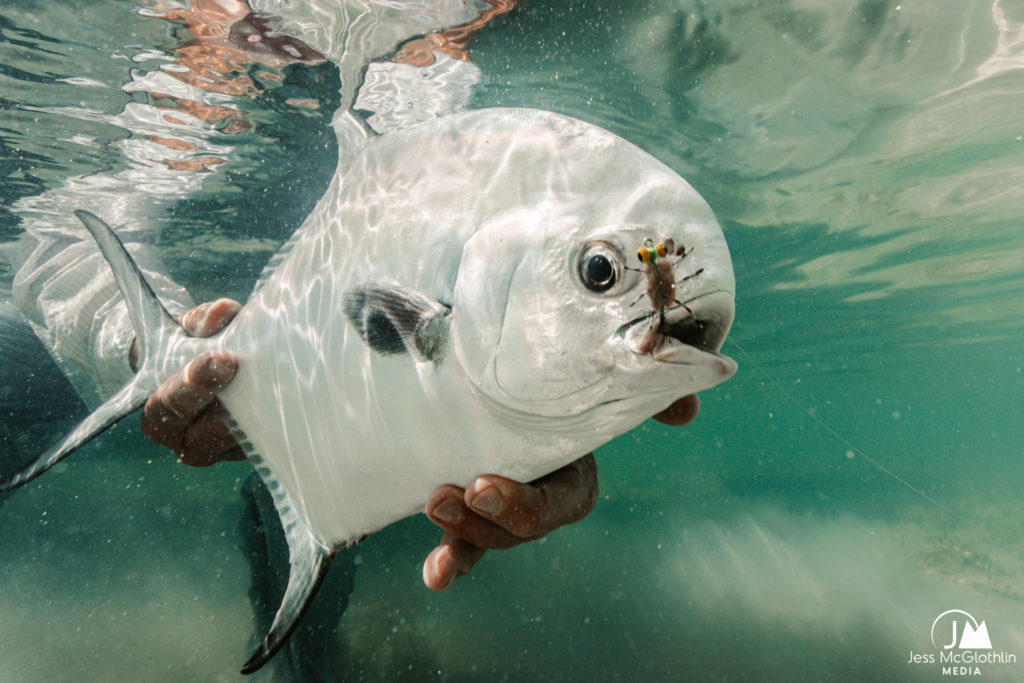
Underwater Housing
I use an AquaTech underwater housing, and have been largely quite happy with it. It’s durable, allows good adjustments within reason, and has held up to storms, sharks, and other shit. It also requires a bit of love.
The housing is rinsed meticulously after each day in the field. If I’m some place with a shower, it comes in the shower with me for a good rinse, and all the buttons are pressed to ensure fresh water gets in every little nook and cranny. Very occasionally, I’ll use a small amount of silicone grease on the controls to keep them smooth and happy. Even less occasionally, the o-rings in the housing and dome port get a very light coating of grease as well.
The dome is cleaned and polished every night inside and out. Each morning as I load the camera in, a good sprinkling of silica gel packets to help manage any moisture that might get inside.
Computer, Hard Drives, and Other Gear
Travel’s not easy on any gear. Even though they log less time on the water and in the field, cameras and hard drives still take a beating. I keep my laptop in a padded neoprene sleeve, which is a very basic effort to prevent sliding injuries in various airport security lines around the world. It helps.
I’ve also run a strip of gaffer tape along the spine of my laptop to help keep out dust and other debris.
Overall, just use common sense with your electronics. Don’t handle them with excessively salty or dirty hands. Wipe them off every now and then. Watch condensation if you’re going from air conditioning into a humid, hot environment often. Cushion it when you can.
Gear is meant to be used. It’s going to get dinged up and maybe even broken. But with a little extra maintenance, we can tip the odds a little more in our favor that it’ll perform when needed in the field. Besides, there’s something cathartic about wiping off the hard-earned dust and dirt from a shoot gone well.
Take care of your gear, and it’ll take care of you.
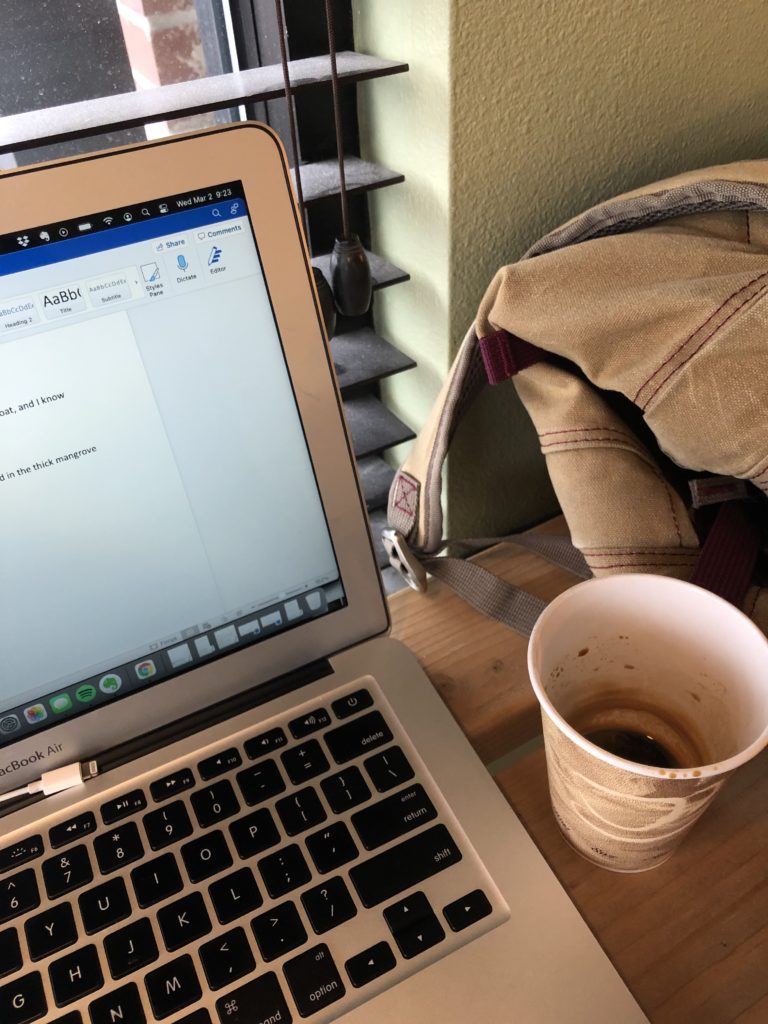 Contrary to popular belief, writing isn’t always sexy. It’s not usually this moment of divine inspiration; the heated all-night writing sessions that Hollywood would have us believe. Oh, it happens, sure. I penned one of my favorite pieces in the back of a Mi-8 helicopter trundling over the Russian tundra years ago.
Contrary to popular belief, writing isn’t always sexy. It’s not usually this moment of divine inspiration; the heated all-night writing sessions that Hollywood would have us believe. Oh, it happens, sure. I penned one of my favorite pieces in the back of a Mi-8 helicopter trundling over the Russian tundra years ago.

